*Updated July 2025
Key takeaways
━━━━━━━━━━━━━━━━━━━━━━━━━━━━━━━━━━━━━
Demand for storage is rising, driven by urbanisation and flexible living.
Location, market research and digital presence are critical.
Automation and smart tech boost efficiency and customer experience.
Branding and unique value are essential for standing out.
Compliance, insurance and scalable systems protect your investment.
━━━━━━━━━━━━━━━━━━━━━━━━━━━━━━━━━━━━━
The self storage industry continues to grow rapidly, driven by urbanisation, downsizing and the demand for flexible living and working space. In 2025, this evolving landscape offers strong opportunities for new entrants whether you are an investor, entrepreneur or commercial landlord.
At HOLD Self Storage we have navigated this journey first-hand. Since launching in 2024, we have built a climate-secure, digital-first facility in London. Our experience informs the strategies shared in this guide.
We want to help you build your own self storage business, one that is profitable and future-proof.
Table of contents
Understanding the self storage business in 2025
How to conduct market research and opportunity analysis
How to develop your business model and plan
Legal, regulatory and compliance essentials
How to secure funding and manage your budget
How to select the right location and set up your facility
Build your brand and market your storage business
Managing operations on a day-to-day basis
How to plan your launch and growth strategy
Manage risks and future-proof your storage business
Common pitfalls when starting a self storage company
Understanding the self storage business in 2025
According to the Self Storage Association UK SSA 2025 Report, the UK self-storage industry remains resilient, with average occupancy above 80% and rising rental income, despite broader economic pressures.
What is a self storage business?
A self storage business rents secure units to individuals and companies on a flexible basis. Customers typically pay monthly to store goods, whether short-term during a move or long-term for business operations.
Most facilities operate purpose-built sites, though storage containers and modular units have grown in popularity.
Who uses self storage?
The SSA’s latest survey found that over 44% of customers rent storage due to less space for storage at home. Others are downsizing, relocating or managing estate clearances.
Business usage has increased too, with many SMEs and e-commerce retailers using self storage for stock and seasonal equipment. As awareness grows, more people consider it a mainstream storage solution.
How profitable is self storage in 2025?
The self storage sector continues to generate strong returns. According to the SSA UK 2025 Report, average occupancy rates remain above 75% nationally, with mature stores averaging closer to 80%. Revenue per square foot increased by 6% in 2024, reaching £29.13 across the UK.
A well-run 25,000 sq ft facility can generate over £500,000 per year in gross revenue, while mature operators often report net margins of 25 to 30%.
These benchmarks confirm that self storage remains one of the most resilient and profitable sectors in commercial property today.
What is driving industry growth in 2025?
Occupancy and rental yields remain high, underpinned by ongoing urbanisation and rising public familiarity. As remote work and home-based businesses grow, many people are seeking more space outside the home for work equipment, stock, and seasonal storage.
The SSA reports that over half of UK consumers now understand what self storage is, up from just 30% a decade ago. This growing acceptance has expanded the sector’s reach across both residential and commercial segments.
What types of storage businesses are there?
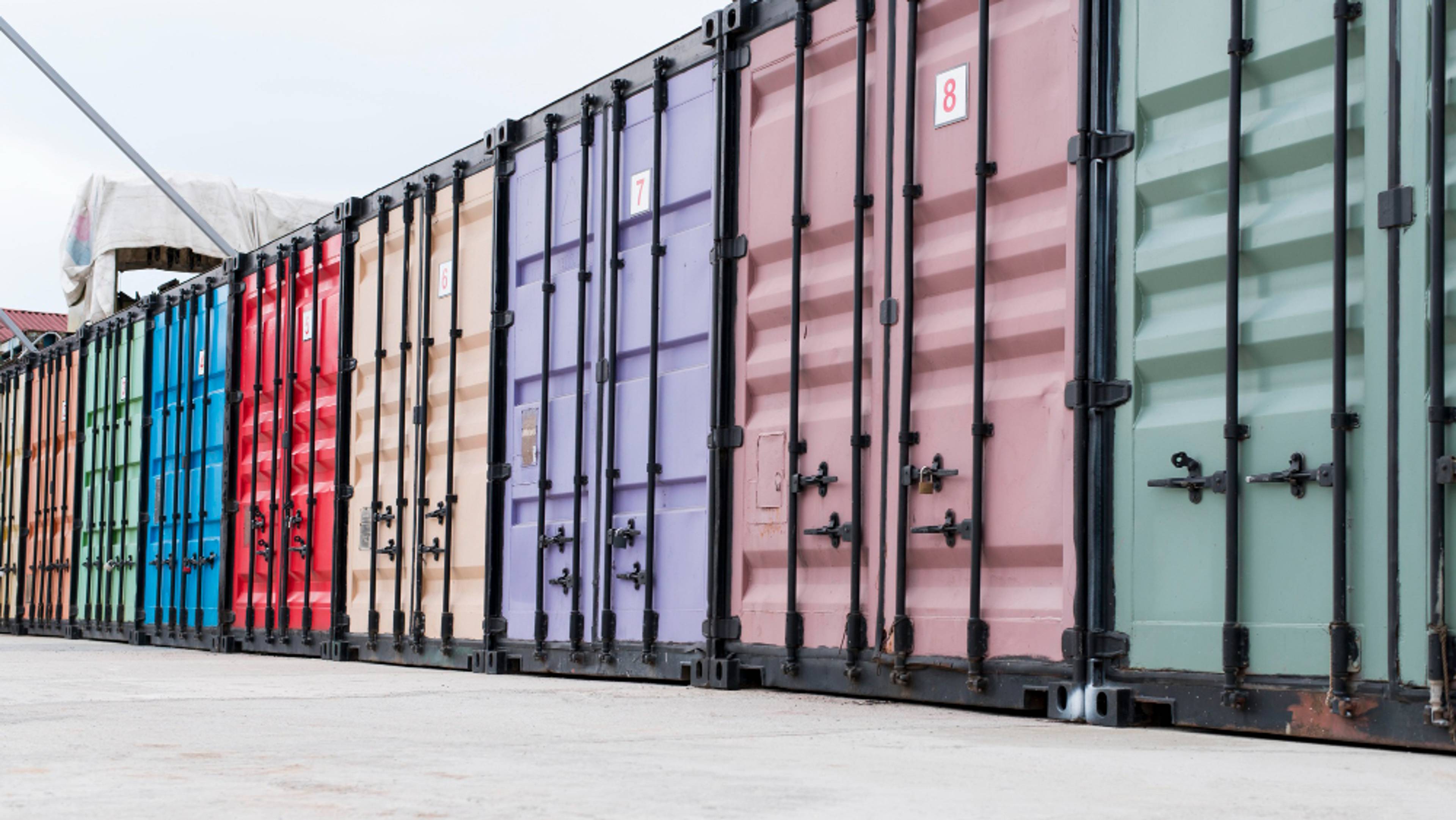
Container storage units
Entrepreneurs can choose between different models, including large multi-storey facilities, container sites or hybrid formats. While larger facilities offer more revenue potential, container-based storage can be quicker and more cost-effective to launch.
According to the SSA, the average facility now spans around 25,000 square feet, but profitable businesses exist well below that threshold. Storage containers and shipping containers are increasingly common options in many UK towns, especially outside dense urban centres.
Remember, the storage type you choose, whether traditional multi-storey, container-based, or mobile, should align with your target customers, available capital, and long-term goals.
How to conduct market research and opportunity analysis
This is essential before launching your self storage business. Understanding your target market and local demand helps you tailor your services and pricing, reducing risk and maximising growth potential.
Identify your target customers
The self storage market serves diverse groups. Residential users include renters, homeowners, students and those undergoing life changes such as moving or downsizing. Business customers range from small enterprises to online retailers that need flexible space for storing stock or equipment.
The SSA reported business customers now make up around 34% of the market, reflecting growing demand for business storage solutions.

Av2Hire, one of the London businesses HOLD supports.
Recognising this shift early on, we developed modern business storage to support London’s growing network of SMEs, creatives and startups. A testament to the fact that understanding your customer base is key for shaping your marketing and service offerings.
Analyse local demand
Location is critical. Urban areas with high population density and rising housing costs tend to generate more demand for storage space. Research local demographics, housing trends and economic activity to identify underserved areas.
The UK self storage market is unevenly saturated. Some regions have numerous competing facilities, while others present opportunities for new entrants. Use local data and competitor mapping to find gaps in service or pricing.
Conduct competitive analysis and SWOT
Evaluate existing storage facilities in your area. Analyse their pricing, unit sizes, security features and extra services. Identify their strengths and weaknesses.
Perform a SWOT analysis to map your business’s strengths, weaknesses, opportunities and threats. This helps you position your self storage facility effectively against competition.
How to develop your business model and plan

Choose your storage format
Choose the storage format that best suits your target customers and available resources. Many operators run traditional multi-unit self storage facilities. Container storage and mobile units also offer cost-effective alternatives. Customers storing sensitive or high-value items may expect climate-controlled units.
Bear in mind: climate control adds cost
Installing full climate control—regulating both temperature and humidity—is one of the more expensive upgrades. However, it can increase appeal and support premium pricing. Typical installation costs are:
£75 to £150 per m² for full self storage fit-outs, including insulation, HVAC systems, internal partitioning, and fire protection
Source: United Storage UK
Define your revenue streams

Generate most of your income by renting units on a monthly basis. Increase revenue by offering additional services such as insurance, packing materials and transport or logistics support. Offering flexible add-ons helps you attract a wider range of customers and improve satisfaction.
For example, HOLD's online Box Shop offers a variety of packing materials and moving supplies. Our partnerships with trusted removal companies support seamless move-ins, and we also provide optional HoldAssure insurance.
Draft a credible business strategy
Create a detailed business plan to guide your strategy and attract investors. Include market anslysis, financial projections covering startup costs and revenue forecasts, plus marketing and operational plans.
Plan for scalability by including options to expand units, open new sites, or franchise your business. This approach helps you future-proof your venture.
Legal, regulatory and compliance essentials

Starting a self storage business requires careful attention to legal and regulatory requirements. Ensuring compliance from the outset protects your investment and builds customer trust.
Business registration and structure
Register your business properly with the relevant UK authorities. Decide on a legal structure such as a limited company or sole trader, which affects taxation and liability. A credible business plan supports this process and may be needed for funding applications.
Planning permission and zoning
Check local planning permission rules and zoning regulations before purchasing property or entering a land rental agreement. Obtaining necessary permits ensures your facility complies with regional guidelines and avoids costly delays.
Insurance and risk management
Secure comprehensive insurance policies to cover property damage, liability and cyber risks. Insurance protects your self storage facility and customers’ belongings, especially if you offer additional services such as packing or transport.
Health and safety
Implement health and safety standards across your storage business. Maintain secure access controls, fire prevention measures and regular safety inspections. Maintaining a safe facility is crucial for ensuring compliance and fostering customer confidence.
Data protection and cyber compliance
With growing digitalisation, protect your customers’ data and business information through robust cybersecurity and compliance with data protection laws. Use management software that supports secure administrative tasks and payment processing.
How to secure funding and manage your budget

Understand initial costs
Starting a self storage business involves several upfront expenses. These typically include purchasing property outright or leasing land, construction or renovation, installing security systems, technology investments and staffing costs. Remember to plan your budget to cover all necessary expenditures.
Explore funding options
Various funding routes are available to self storage business owners. Traditional bank loans remain a common source, but many entrepreneurs successfully use crowdfunding platforms to gather small investments from multiple backers.
Government grants and low-interest loans can also provide valuable support. Angel investors interested in the self storage sector may offer funding in exchange for equity or partnership.
Budget and cost-saving strategies
Effective management of operational costs is essential for maintaining profitability. Consider leasing property rather than purchasing outright to reduce initial expenditure.
Modular construction and repurposing existing buildings can also lower costs. Bartering services (such as marketing or web development) can provide savings in the early stages.
Careful financial planning (including contingency reserves and cash flow monitoring) ensures your business can navigate fluctuations.
How to start a self storage business on a lean budget
Not every storage unit business starts with large commercial property assets. Many new entrants begin with:
Leased land in semi-rural or industrial areas
Retrofit of existing garages, warehouses or retail units
Modular or containerised units to minimise build costs
Shared partnerships or joint ventures to split setup costs
Crowdfunding campaigns to raise startup capital from community backers
These leaner models can provide a faster path to cash flow, especially in underserved areas where competition is low and setup costs are lower.
How to select the right location and set up your facility
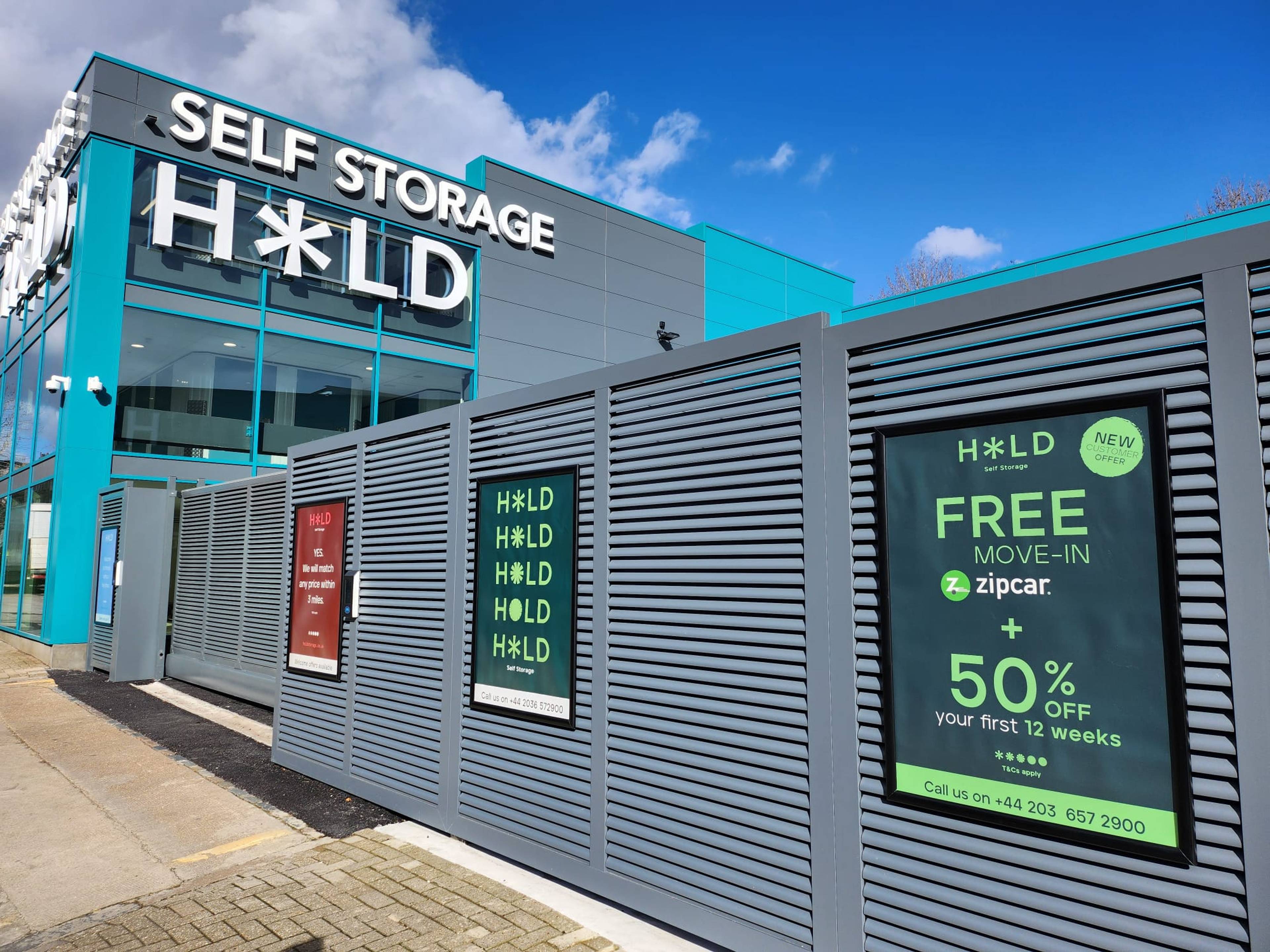
Choosing the right location is one of the most important decisions when starting a self storage business. A good site balances accessibility, security, visibility and future expansion potential to meet customer needs and maximise revenue.
We launched our first facility in King’s Cross and are now expanding across the capital with new sites underway in Croydon, Chiswick and Woodford. Our mission is to bring high-quality, digital-first storage to every corner of London, guided by local demand and strategic site selection.
What should you look for in a location?
We recommend areas with high population density, rising housing costs and a lack of nearby storage facilities. Proximity to busy roads or commercial centres can increase passing traffic and attract more customers.
Consider how easily customers can access the site, including parking and 24-hour access options. Remember to choose a site that feels like a secure area for customers to visit, even outside normal business hours.
What range of units should you offer?
Design your facility with a thoughtful unit mix that caters to different storage needs. Offering a wide range of unit sizes ensures each customer can find enough space for their needs, whether they are storing a few personal boxes or a full office inventory. Climate-controlled and indoor storage options are increasingly popular for sensitive goods.
Invest in security
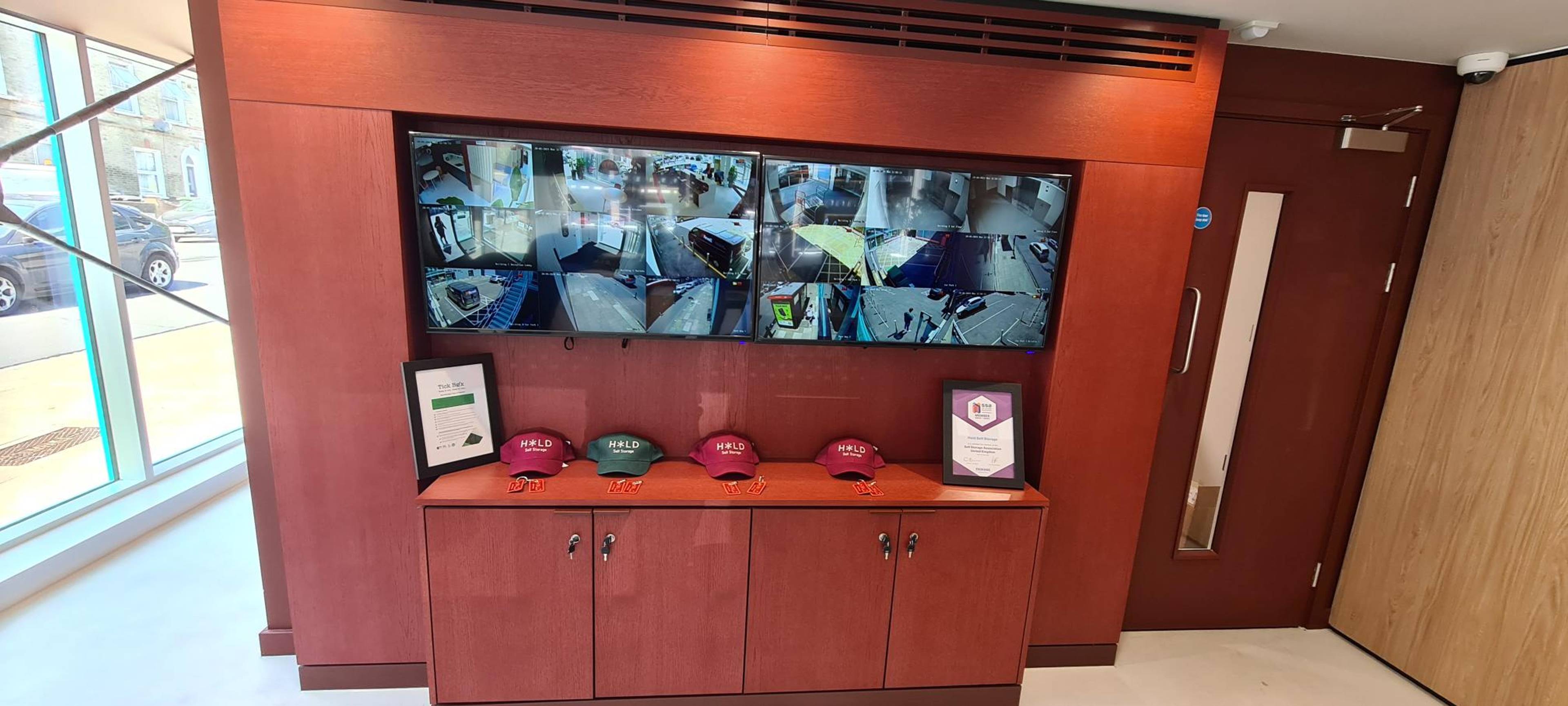
Installing video surveillance systems, controlled gate access and well-lit grounds helps protect your facility and builds customer confidence. Security is a key factor that storage customers evaluate before choosing a storage company.
At HOLD, this was a top priority for us, and all our facilities are fitted with 24/7 CCTV, intruder alarms, and regular inspections.
Plan for scalability
Choose a site that allows room for additional units or buildings as your business expands. This flexibility can enhance your business potential and long-term success.
Build your brand and market your storage business

Building a strong brand and effective marketing strategy is vital to attract potential customers and stand out in a competitive market. Your brand should clearly communicate what sets your storage business apart.
Understand your target audience
Whether you focus on personal storage, businesses, students, or niche markets, tailoring your messaging to their needs helps you connect more effectively and deliver a service that resonates.
Stand out in a crowded space
The UK self storage industry experiences varying levels of market saturation across regions. To succeed, you must position your brand to address these challenges and differentiate your offering.
At HOLD, we’ve embraced this challenge by positioning ourselves as a disruptor in the UK self storage industry. With market saturation high in London, we needed to stand out. That’s why we focused on a fully digital experience tailored to the needs of Londoners. This tech-forward, customer-focused approach differentiates us and raises customer expectations for modern storage solutions.
Invest in digital visibility
Digital marketing plays a key role in amplifying your brand message. A mobile-friendly website, optimised for search engines, improves your visibility in local search. Paid campaigns and local SEO enhance reach, while consistent branding across platforms builds recognition and trust.
Fill the content gap
Part of the reason for our success lies in our aggressive content strategy. We identified a clear gap in the market: few self storage brands were investing in high-quality educational content. We filled that space, helping customers understand pricing, security, and storage options in plain, accessible terms.
This strategy has grown our organic visibility and secured search share against larger, more established competitors.
Build local partnerships
Local partnerships can further expand your reach. Working with moving companies, estate agents, or local businesses provides referral opportunities and strengthens your presence within the community.
━━━━━━━━━━━━━━━━━━━━━━━━━━━━━━━━━━━━━
Key marketing tactics include:
Search engine optimisation to rank well for local storage queries
Google Business Profile optimisation to attract nearby customers
Encouraging and managing online reviews to build credibility
Running targeted social media campaigns and promotions
━━━━━━━━━━━━━━━━━━━━━━━━━━━━━━━━━━━━━
A consistent, customer-focused approach will help you attract and retain storage customers while building brand loyalty.
Managing operations on a day-to-day basis
Efficient management and well-trained staff are essential for running a successful self storage business. Daily operations should prioritise customer service, security, and ongoing maintenance.
Start by hiring staff with experience in customer service or property management. Provide comprehensive training on standard operating procedures, safety protocols, and emergency response.
Outsourcing tasks such as cleaning, security monitoring, and IT support can reduce costs and allow your core team to focus on the customer experience.
━━━━━━━━━━━━━━━━━━━━━━━━━━━━━━━━━━━━━
Key operational priorities include:
Maintaining facility cleanliness and security
Providing excellent customer support
Conducting regular equipment and safety inspections
Handling administrative tasks efficiently
━━━━━━━━━━━━━━━━━━━━━━━━━━━━━━━━━━━━━
Strong operational management not only improves customer satisfaction but also supports high occupancy and long-term growth.
The importance of an eco-conscious approach
Sustainability is now a key part of operational strategy. Energy-efficient lighting, recycling programmes, and low-impact maintenance can reduce long-term costs and attract environmentally aware customers.
HOLD is leading the way. We’re aiming to be the UK’s first self storage provider to achieve a BREEAM Outstanding rating. At our new sites, over 90% of construction materials are recycled, and each facility is designed using carbon lifecycle modelling to support net-zero performance from day one.
How to plan your launch and growth strategy
Launching your storage business successfully sets the tone for long-term growth. Whether you opt for a soft launch or a grand opening, focus on building awareness and attracting early customers.
Consider offering early-bird storage discounts or promotions to encourage sign-ups and generate buzz. For example, HOLD self storage offers 50% off for new customers, plus runs a yearly Spring Sale. Partnering with local influencers or community groups can also help spread the word.
Gather customer feedback from the start to identify areas for improvement. Listening to your self storage customers builds trust and helps tailor your services to meet their needs.
As your business grows, explore expanding your facility by adding more self storage units or opening new locations. Franchising your storage business is another way to scale while maintaining brand consistency.
━━━━━━━━━━━━━━━━━━━━━━━━━━━━━━━━━━━━━
Key growth tactics include:
Early promotions and discounts
Strategic partnerships and PR campaigns
Ongoing customer engagement and feedback
Expanding units, locations or franchising
━━━━━━━━━━━━━━━━━━━━━━━━━━━━━━━━━━━━━
Having a clear growth strategy ensures you capitalise on market opportunities and build a resilient storage business.
Manage risks and future-proof your storage business
Managing risks effectively protects your investment and ensures long-term success in the self storage sector. Regularly assessing security, legal compliance and market shifts helps you stay ahead of challenges.
Start with comprehensive insurance covering property damage, liability and cyber risks. Regularly review your policies to keep coverage aligned with your growing business.
Conduct routine security audits and update systems as needed. Invest in alarms, security cameras and access controls to safeguard your facility and reassure customers.
Keep up with regulatory changes related to planning, health and safety and data protection. Maintaining compliance reduces legal risks and builds trust.
Monitor industry trends such as electric vehicle storage, flexible lease options and sustainable practices. Adapting your business model to emerging demands helps maintain a competitive advantage.
━━━━━━━━━━━━━━━━━━━━━━━━━━━━━━━━━━━━━
Key steps to future-proof your business include:
Performing regular risk assessments and compliance audits
Updating insurance and security measures proactively
Staying informed about market trends and customer expectations
Incorporating flexible and sustainable storage solutions
By embedding risk management into daily operations and strategic planning, you build resilience and position your business for sustained growth.
━━━━━━━━━━━━━━━━━━━━━━━━━━━━━━━━━━━━━
Common pitfalls when starting a self storage company
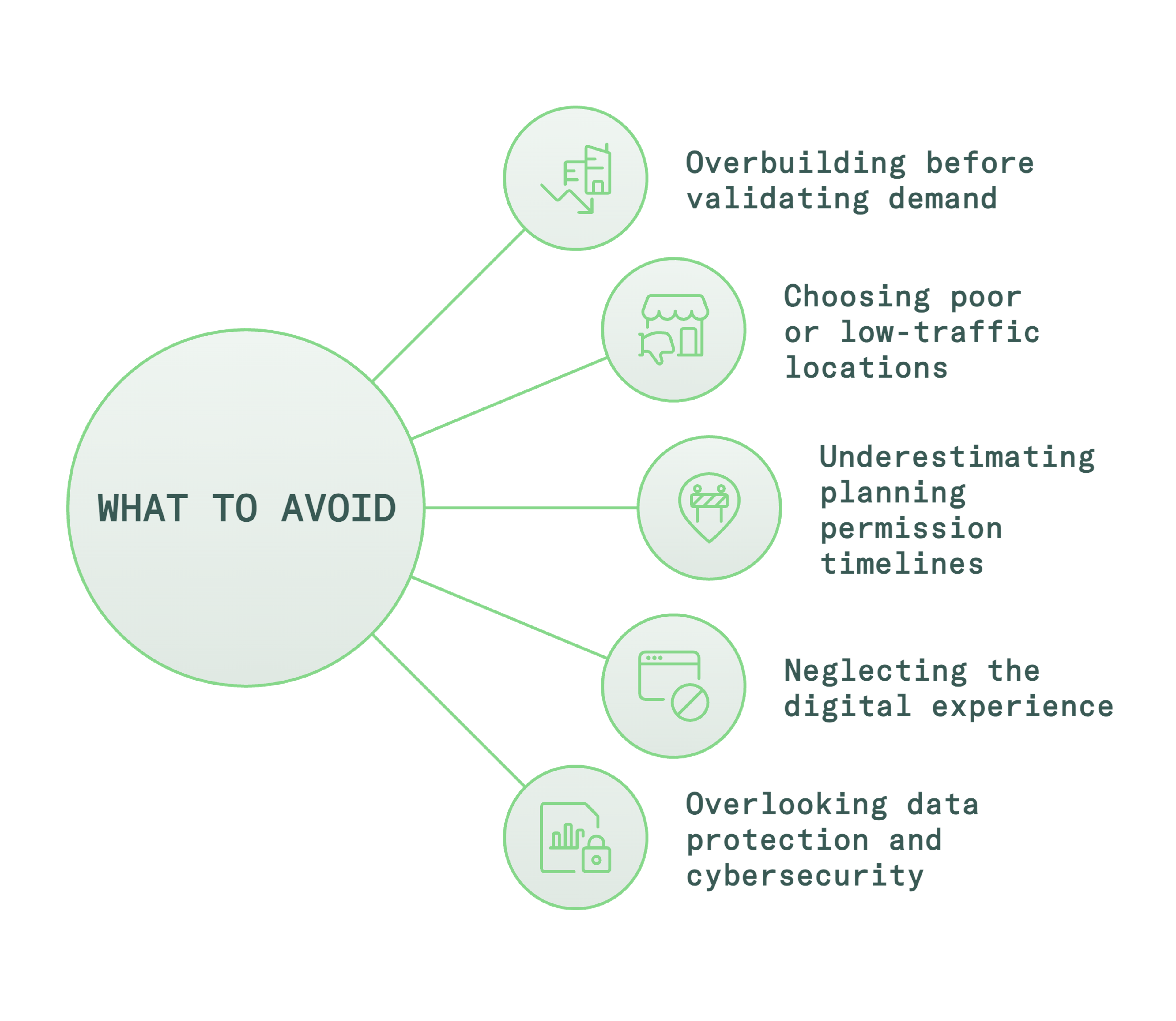
Even with a solid plan, many first-time operators make avoidable mistakes that can delay progress or impact profitability. Recognising these early can help you launch with greater confidence and fewer setbacks.
Overbuilding before validating demand
Investing in a large facility without first confirming local demand or pricing tolerance can result in low occupancy and slow returns. You need to know what customers in your local area consider a fair price. Begin with a scalable model and test demand through local research and competitor analysis.
Choosing poor or low-traffic locations
Sites that are hard to access, lack visibility, or feel unsafe often struggle to attract customers. Location is critical. Look for areas with strong footfall, easy access, and a safe, secure environment.
Underestimating planning permission timelines
Planning approval and regulatory compliance can take months longer than expected. Delays with zoning, change of use, or fire safety sign-off are common. Factor this into your launch timeline from the outset.
Neglecting the digital experience
Customers now expect seamless online booking, instant pricing, and 24-hour digital access. A weak website or lack of automation can result in missed bookings. HOLD’s digital-first model is a core reason we gained traction quickly in a saturated market.
Overlooking data protection and cybersecurity
Cloud-based booking systems and digital contracts require strict compliance with data protection laws. Failing to secure customer information can lead to fines and reputational damage. Always use GDPR-compliant software with secure access protocols.
Conclusion
The self storage sector in 2025 offers real opportunity, but only for those prepared to execute well. At HOLD, we have seen how smart location choices, digital-first operations and strong brand clarity can drive rapid growth, even in a crowded market.
This guide is based on what works. If you want to build a profitable and modern storage business, focus on what matters most: meeting real customer needs with flexible infrastructure, seamless digital access and a clear point of difference.
The market is ready. With the right strategy, your storage business can lead.
Appendix and resources
Sample business plan template: Outline your business goals, financial projections, and marketing strategy.
Checklist for permits and compliance: Ensure you meet planning permission, health and safety, and business registration requirements. See the UK government guidance for support.
Recommended facility management software: Streamline operations with tools that manage bookings, payments, and customer communication.
Industry associations: Join groups such as the Self Storage Association UK for networking, training, and access to industry data.
Further reading: Review the SSA UK 2025 Industry Report for detailed market trends, benchmarks, and customer insights.
Need Self Storage in London? HOLD is here for you
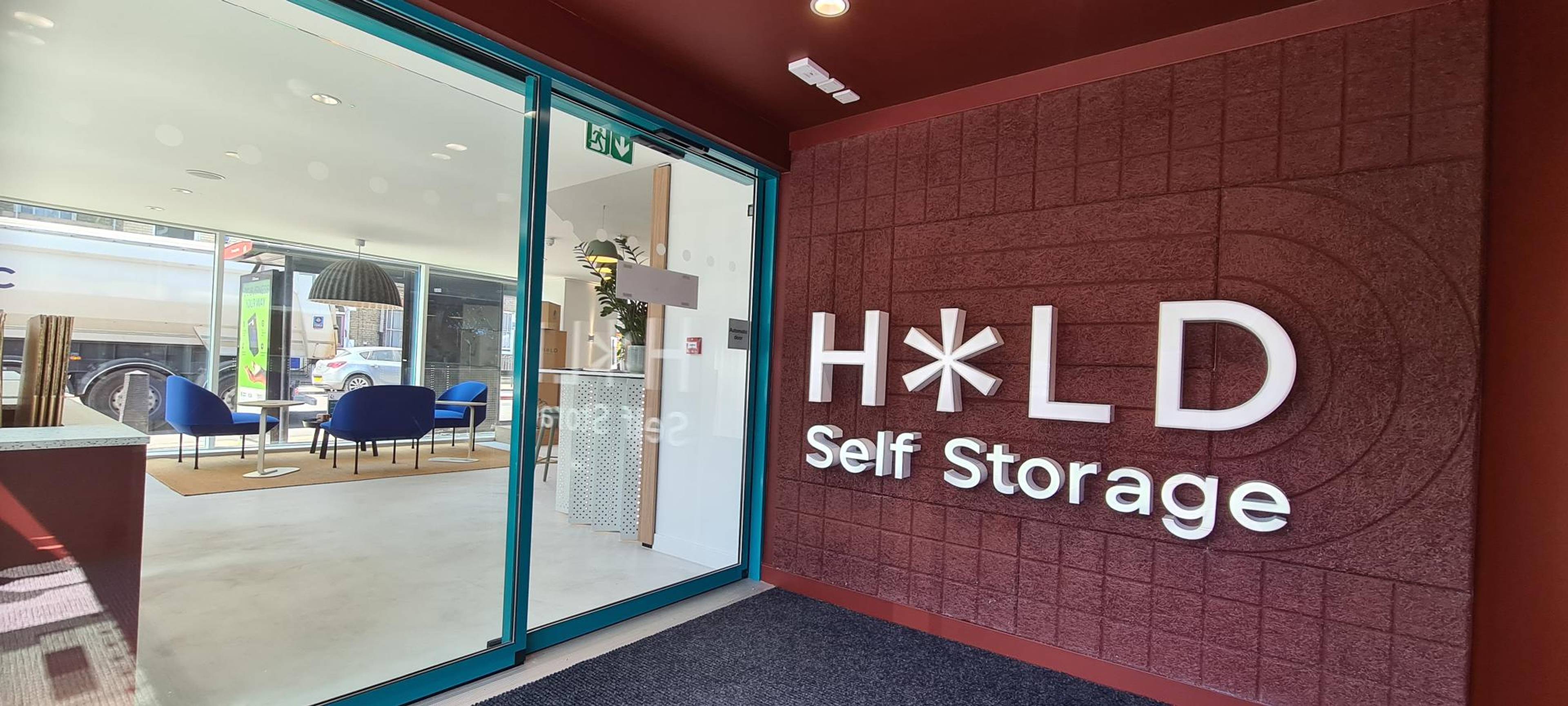
HOLD is transforming self storage in London. We offer a wide variety of secure storage units, premium business solutions and no fixed contracts. We also provide complimentary 24-hour access and a digital-led experience, all at a fair price. From setup to service, we're redefining what modern storage should look like.
Get your free quote today and enjoy 50% off, plus our price match guarantee within 3 miles.
Frequently asked questions
What’s the average annual income owning storage units?
A typical 25,000 sq ft facility in the UK can generate over £500,000 in gross annual revenue, with net margins of 25–30% once occupancy stabilises. Larger or premium sites can exceed this, depending on location, pricing, and services offered.
Source: SSA UK 2025 Report
How do I start a storage business with no money?
Start lean by leasing land, using shipping containers, and retrofitting existing buildings. Crowdfunding, angel investors, or joint ventures can help raise capital without relying on traditional loans. Modular setups and phased development also reduce costs upfront.
How much does it cost to start a storage unit business in the UK?
Startup costs vary widely, but entry-level container-based sites can begin from £50,000–£150,000, depending on land, planning, and setup. Purpose-built facilities usually require £500,000+ in capital.
Figures based on SSA UK industry benchmarks and operator data.
What’s the cheapest way to build storage units?
The most cost-effective option is to use container-based storage on leased land. It avoids high construction costs, planning is often simpler, and units can be added in phases as demand grows. Retrofitting unused commercial buildings is another low-cost route.

